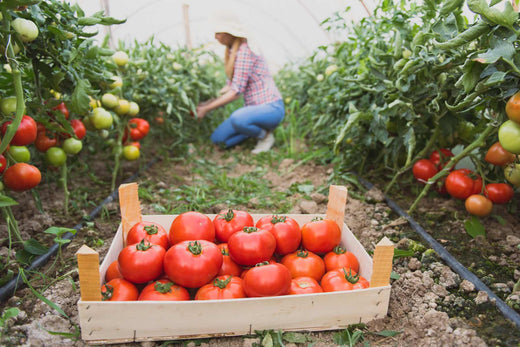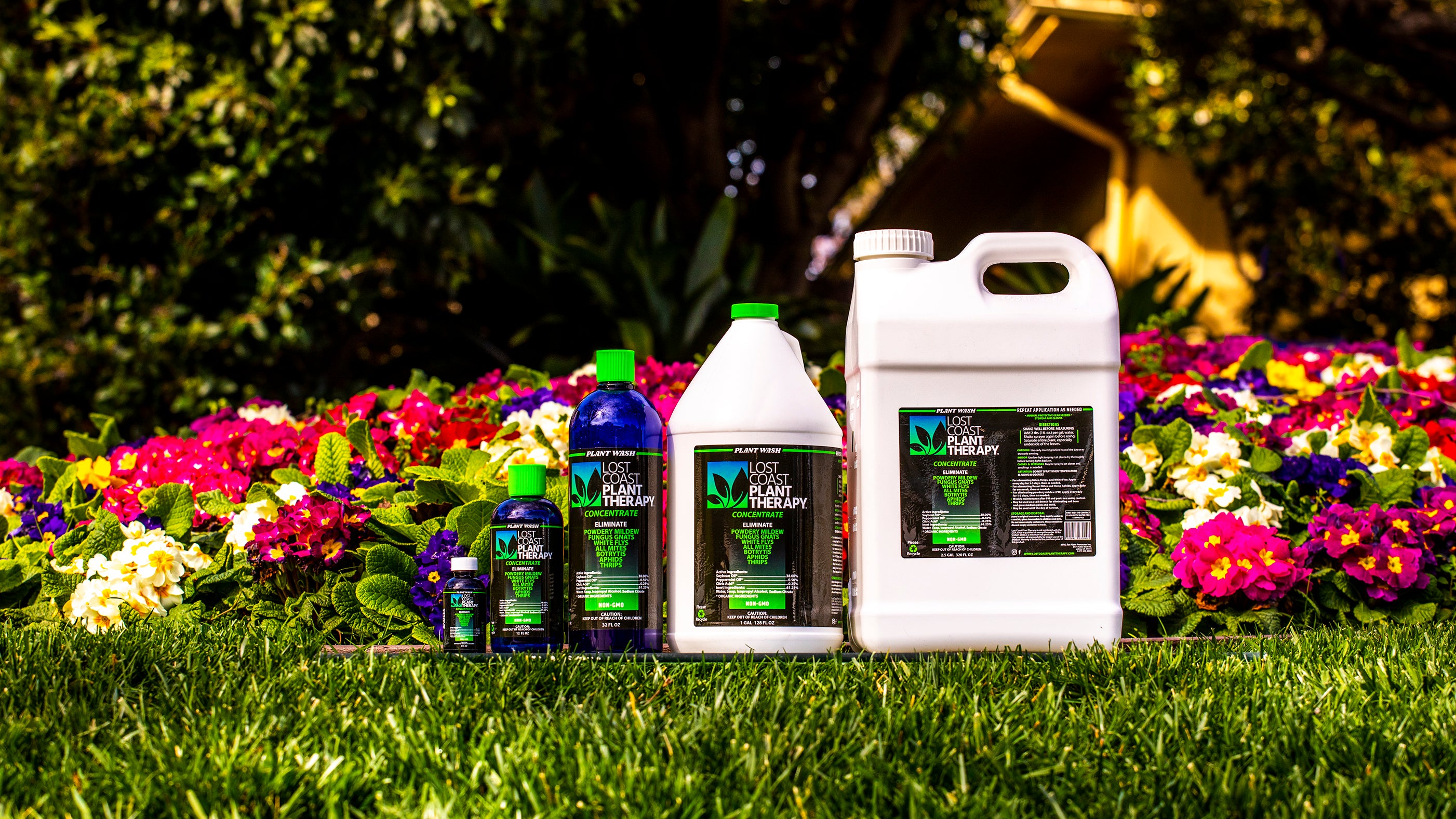For many, the introduction to organic gardening begins with a simple desire: to eat healthier and to live more sustainably. But where to start? With terms like "organic pesticides," and "soil organic matter content" floating around, getting started can seem overwhelming. Yet, the essence of organic gardening is straightforward—it's about fostering life from the ground up, using practices that enhance the natural fertility and vitality of your garden without relying on synthetic fertilizers and pesticides.
This guide covers organic gardening for beginners and is crafted for the home gardener, from beginners eager to start an organic garden to growers looking to refine their practices. Whether it's a sprawling backyard or a small garden on your balcony, the principles of organic gardening apply universally.
As we dive into topics like pest control, organic materials, organic gardening practices and the magic of composting, we'll uncover the tools and techniques that make organic gardening rewarding for anyone with a patch of earth under their care.
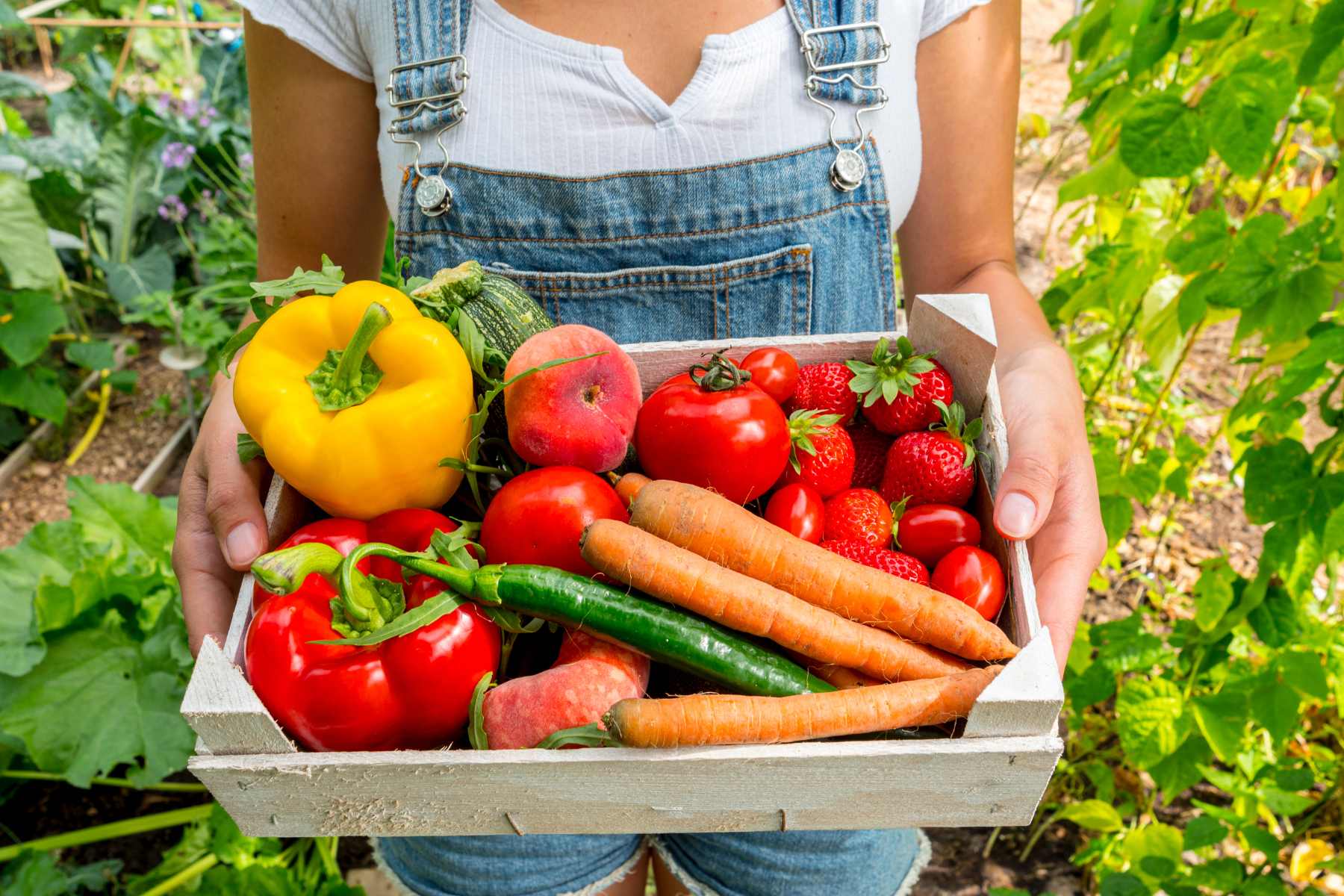
Understanding Organic Gardening Basics
Definition of Organic Gardening
Organic gardening is much more than avoiding synthetic pesticides and fertilizers. It's a holistic approach that considers the entire ecosystem of the garden. It nurtures the soil, plants, and wildlife in a natural, sustainable way. It emphasizes the use of natural resources, encourages biodiversity, and focuses on creating a healthy environment that supports plant growth. At its core, growing an organic garden is about working with nature, rather than against it, to produce healthy, vibrant plants and produce year after year.
Key Principles for Success
Soil Health is Paramount: The heart of successful organic gardening lies in the soil. Healthy soil teeming with life is the foundation of a thriving garden. Organic gardeners focus on building soil fertility through composting, and using organic matter to feed the soil and the organisms within it.
Compost is Gold: Organic gardening is synonymous with composting. Compost adds essential nutrients back into the soil, improves soil structure, and helps retain moisture.
Biodiversity is Beneficial: A diverse garden is a resilient garden. By planting a variety of crops and you create a balanced ecosystem.
Natural Pest and Disease Control with IPM: Instead of reaching for chemical solutions, organic gardeners rely on Integrated Pest Management (IPM) methods and natural products, like our Natural Plant Protector, to prevent and control pests and diseases when used as directed.
See 10 Common Garden Pests and How to Prevent and Control Them.

The Soil: Foundation of Your Garden
Soil is not just dirt, it's a living, breathing entity that's home to billions of microorganisms, insects, and other forms of life. These organisms play a crucial role in breaking down organic matter, fixing nitrogen, and making nutrients available to plants. Healthy soil leads to healthy plants, which are more capable of resisting pests and diseases. By focusing on soil health, we ensure that our garden has a strong foundation.
How to Test and Improve Soil Fertility Organically
Soil Testing: Before adding anything to your soil, it's wise to conduct a soil test. This will tell you what your soil has and what it lacks. You can get a soil test kit from your local garden center or cooperative extension service. This step is crucial for understanding how to amend your soil organically.
Adding Organic Matter: One of the simplest ways to improve soil fertility is by adding organic matter. This can be in the form of compost, aged manure, leaf mold, or green manure (cover crops). These materials add nutrients, improve soil structure, and enhance moisture retention.
Composting: Compost provides a rich, natural fertilizer for your garden. You can compost kitchen scraps, yard waste, and other organic materials. Over time, these materials break down into a dark, crumbly substance that your plants will love.
Mulching: Mulching involves covering the soil with a layer of organic material, such as straw, leaves, or wood chips. Mulch helps retain moisture, suppress weeds, and add organic matter to the soil as it decomposes.
Crop Rotation and Cover Crops: Rotating your crops and using cover crops can also improve soil health. Crop rotation prevents nutrient depletion and can disrupt pest and disease cycles. Cover crops, like clover or vetch, can fix nitrogen in the soil, add organic matter, and prevent soil erosion.
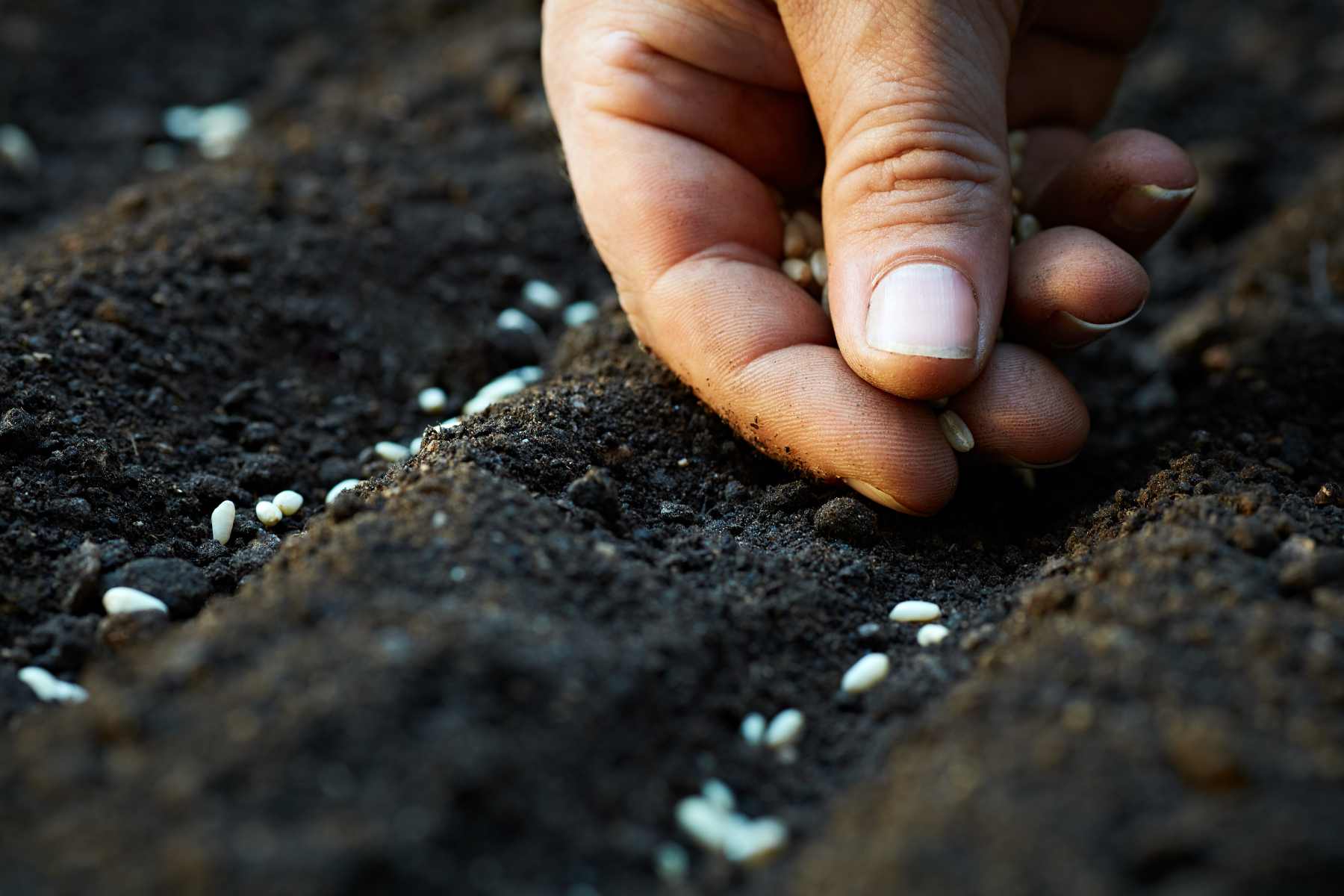
Choosing the Right Organic Seeds and Plants
Choosing organic seeds is the first step in ensuring your garden is truly organic. These seeds come from plants grown without synthetic pesticides or fertilizers often used in conventional gardening, meaning they're more likely to thrive in organic conditions. Using organic seeds also supports the broader movement towards sustainable agriculture.
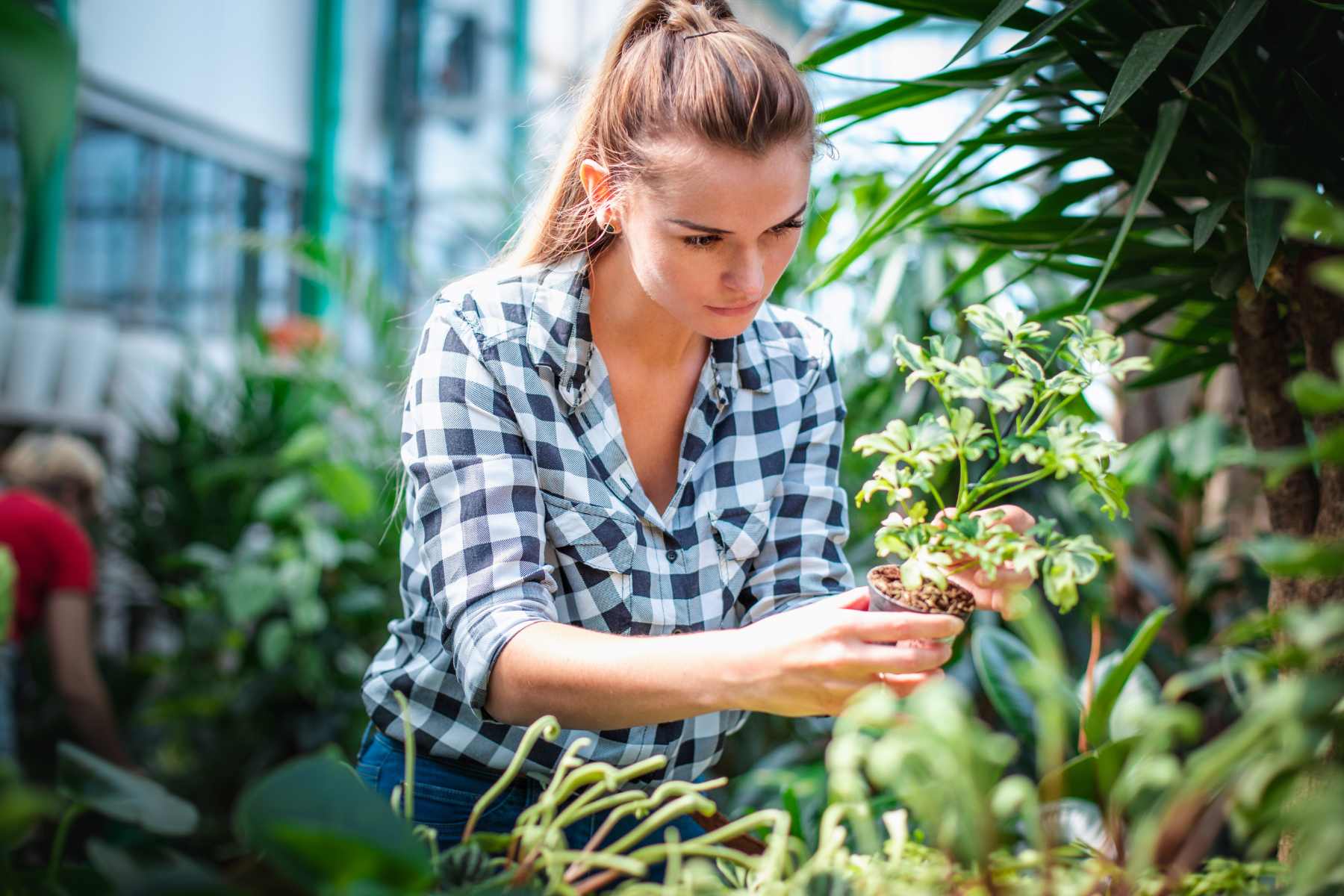
Tips for Choosing Healthy Plants for Your Garden
Buy From Reputable Sources: Purchase your seeds and plants from reputable organic nurseries or seed companies. This ensures that you're getting high-quality, organic products.
Inspect Plants Carefully: When selecting plants, look for signs of good health, such as strong stems and vibrant leaves. Avoid plants that show signs of pests or diseases.
Consider Local and Native Plants: Local and native plants are often better adapted to your area's conditions.
Start Small: If you're new to gardening, it's okay to start small. Choose a few easy-to-grow plants that you enjoy.
Organic gardening is a journey that rewards patience, persistence, and a willingness to learn. Remember, every organic gardener was once a beginner. With time, you'll gain the knowledge and skills to tackle more complex gardening challenges, all while enjoying the process of growing your own organic oasis.
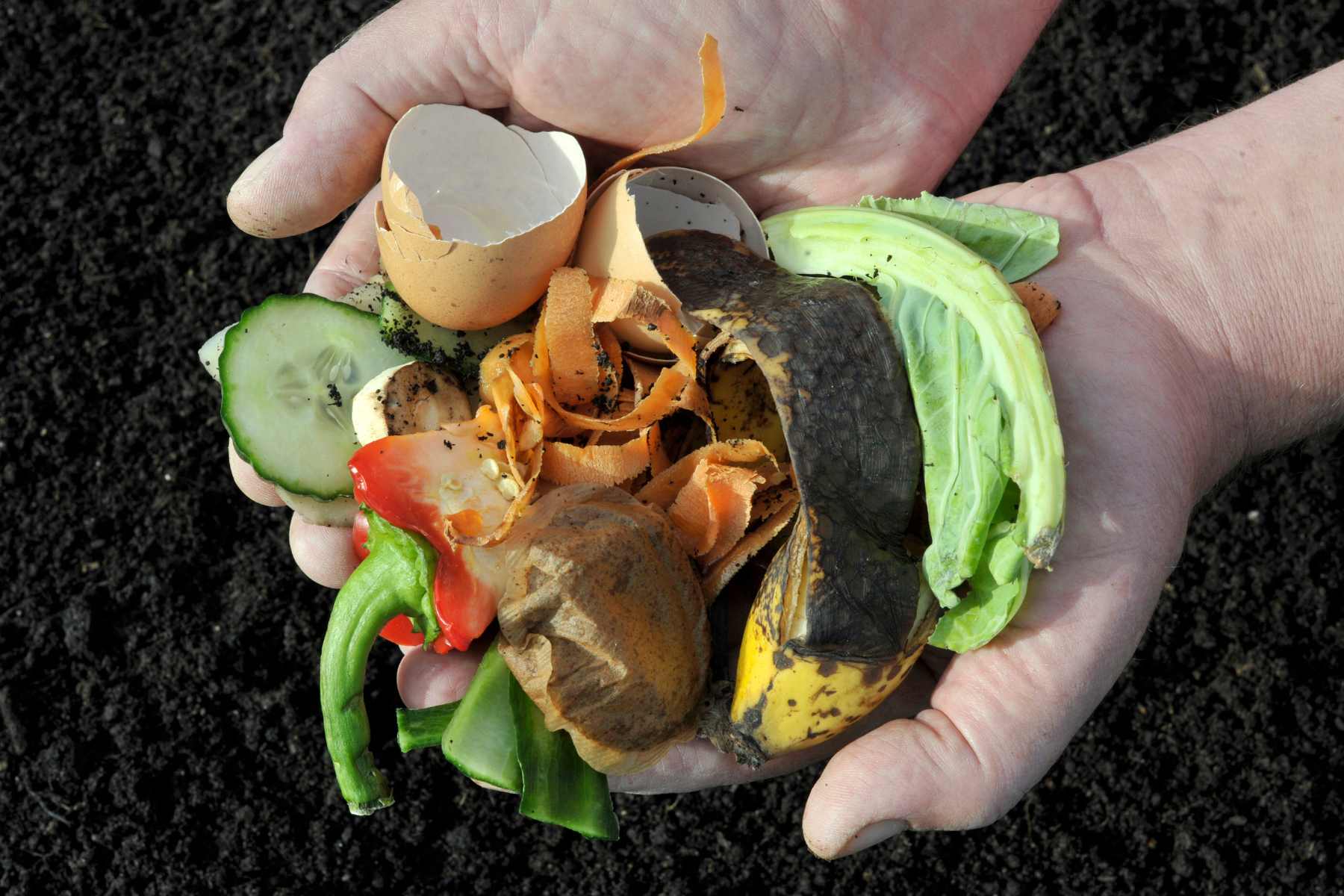
Composting: Turning Waste into Gold
Composting is a magical process that transforms kitchen scraps, yard waste, and other organic materials into rich, nutrient-packed soil amendment, often referred to as "black gold." At its core, composting is a natural process of decomposition that recycles organic material. The result is a humus-like substance that improves soil structure, provides nutrients to plants, and helps retain soil moisture.
The basics of composting involve balancing "greens" and "browns"—that is, nitrogen-rich materials like vegetable scraps, coffee grounds, and grass clippings, with carbon-rich materials like leaves, straw, and shredded paper. This balance helps maintain the right conditions for microorganisms and insects within the compost pile to break down the material efficiently.
Aeration is another critical factor. Turning your compost pile regularly introduces oxygen, which is essential for the decomposition process and helps prevent unpleasant odors. Moisture is equally important, your compost pile should be as damp as a wrung-out sponge to foster the right environment for decomposition.

How to Start and Maintain a Compost Pile
Starting a compost pile is simple. Choose a spot in your garden that's easily accessible year-round. Begin by laying a layer of "browns" to introduce carbon. Add a layer of "greens" on top for nitrogen. Sprinkle with water to moisten, then continue layering greens and browns. Remember, a diverse mix of materials will enrich your compost with a wide range of nutrients.
Regularly turning your pile is crucial for maintaining aeration and speeding up the decomposition process. Use a garden fork or compost aerator to mix the materials every few weeks. If you notice your compost pile is too dry, add water to maintain the moisture level. If it's too wet, add more browns to absorb excess moisture.
In three to six months, depending on conditions like temperature and material types, your compost should be ready to use. Finished compost is dark, crumbly, and smells like earth. Use it to enrich garden beds, potting mixes, or as mulch around plants.
Benefits of Crop Rotation
Crop rotation is an age-old farming practice with significant benefits for the organic garden. It involves changing the location of crops each season to prevent the depletion of soil nutrients and even interrupt the cycle of pests and diseases.
Rotating crops helps maintain soil health and fertility. Different plants have different nutrient needs and root depths; by rotating them, you can help balance nutrient use and encourage a diverse soil ecosystem. For example, following nitrogen-hungry plants like corn with nitrogen-fixing legumes such as beans or peas can naturally replenish soil nitrogen levels.

Planting Techniques for a Successful Organic Garden
Best Practices for Planting
Starting your organic garden on the right foot begins with understanding the best planting techniques. First and foremost, timing is everything. Knowing when to plant is crucial, this involves understanding the last frost dates in your area and the preferred growing conditions of each plant. Early spring is ideal for most vegetables, like tomatoes and peppers that thrive when planted after the danger of frost has passed.
Spacing your plants correctly is another key factor. Overcrowded plants compete for light, water, and nutrients, which can lead to weak growth and disease. Follow the spacing guidelines provided on seed packets or plant tags. This allows each plant enough room to grow robustly, enhancing air circulation and reducing the risk of fungal diseases.
Depth of planting is equally important. Seeds or seedlings planted too deeply might not germinate or reach the surface, while those planted too shallowly may not establish properly. Use the rule of thumb (quite literally, in some cases) to gauge the correct depth: most seeds should be planted at a depth twice their diameter.
Consider the orientation of your garden beds in relation to the sun. Most vegetables and fruits require at least six hours of sunlight daily. Observe your garden area throughout the day to choose a spot that meets these requirements.

Watering Your Organic Garden the Right Way
Efficient Watering Practices
The goal is to water deeply but infrequently, encouraging plants to develop deep root systems that are more drought-resistant and capable of accessing nutrients from deeper soil layers.
Drip irrigation or soaker hoses are ideal for delivering water directly to the root zone where it's needed, minimizing evaporation and preventing the wet foliage that can lead to disease. Watering in the early morning reduces evaporation and gives plants time to dry before the cooler evening temperatures, further reducing disease risk.
Knowing your plants and their water needs is crucial. Some plants, like lettuce and celery, require consistently moist soil, while others, such as tomatoes and peppers, prefer to dry out slightly between waterings. Observing your plants for signs of water stress (like wilting or discolored leaves) can help you tailor your watering schedule to their needs.

Pest and Disease Control in Organic Gardening
Every gardener faces the challenge of pests and diseases at some point. Common garden issues include aphids, which suck sap from plants, leaving them weakened and spider mites that cause yellowing and stippling on leaves. Diseases like powdery mildew, blight, and rust can also disfigure or kill plants if left unchecked.
The organic garden's defense against these threats doesn't rely on synthetic pesticides. Instead, we focus on prevention, cultural practices, and the use of natural and organic products like Lost Coast Plant Therapy to create a balanced ecosystem where pests and diseases are less likely to take hold.
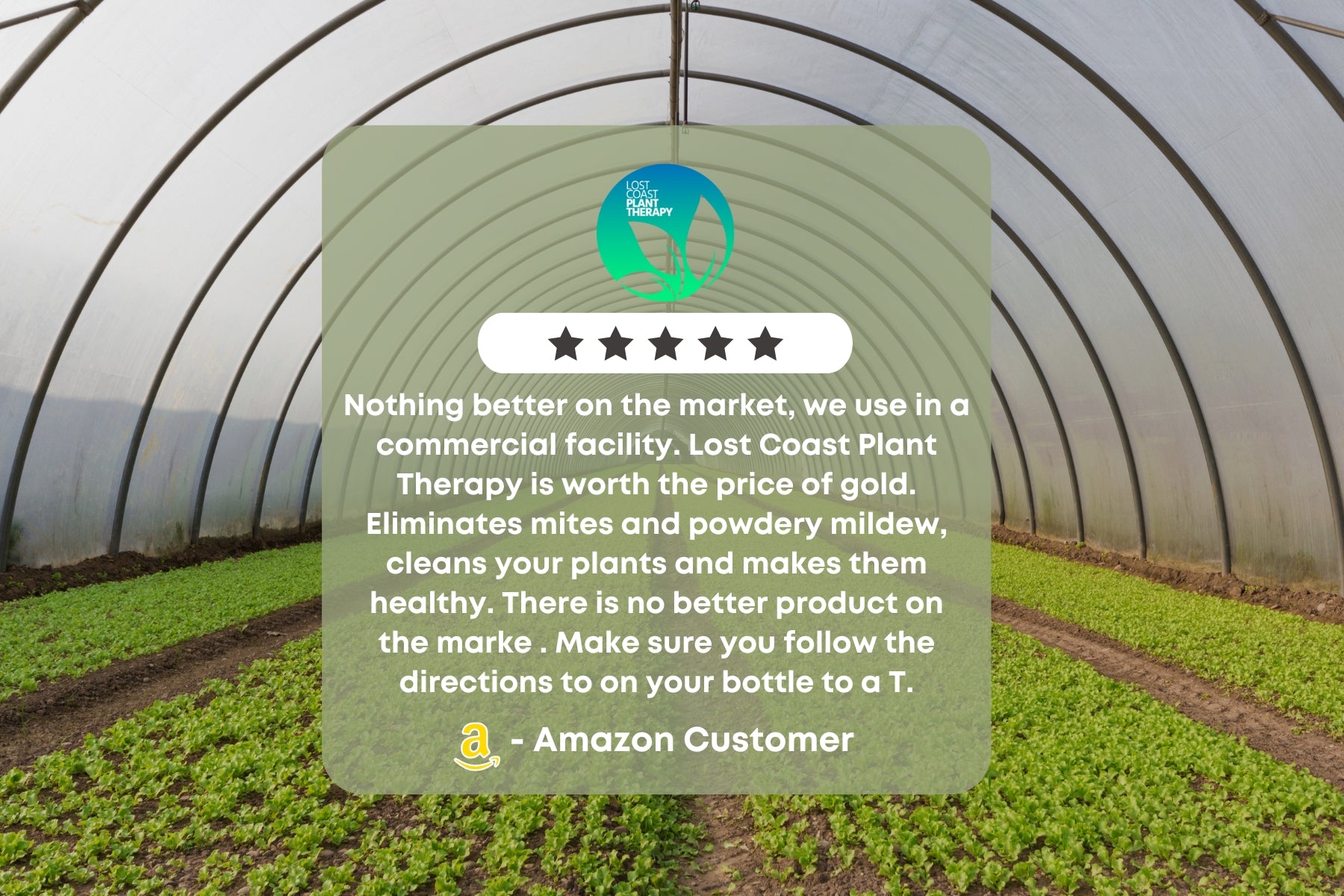
Using Our Natural Plant Protector to Control Issues Safely
Lost Coast Plant Therapy is designed with the health of your garden and the planet in mind. Made with natural and organic ingredients, our Natural Plant Wash controls pests and diseases when used as directed. It works by suffocating pests like aphids, spider mites, and whiteflies upon contact, while also disrupting conditions that support fungal growth on plant surfaces. See more on How it Works here.
For best results, apply our Natural Plant Protector early in the morning or late in the afternoon to avoid the hottest part of the day, which can stress plants. Ensure you cover all parts of the plant, especially the undersides of leaves where pests like to hide. Regular applications can help keep your garden healthy and prevent infestations from becoming a bigger problem. See Instructions here.
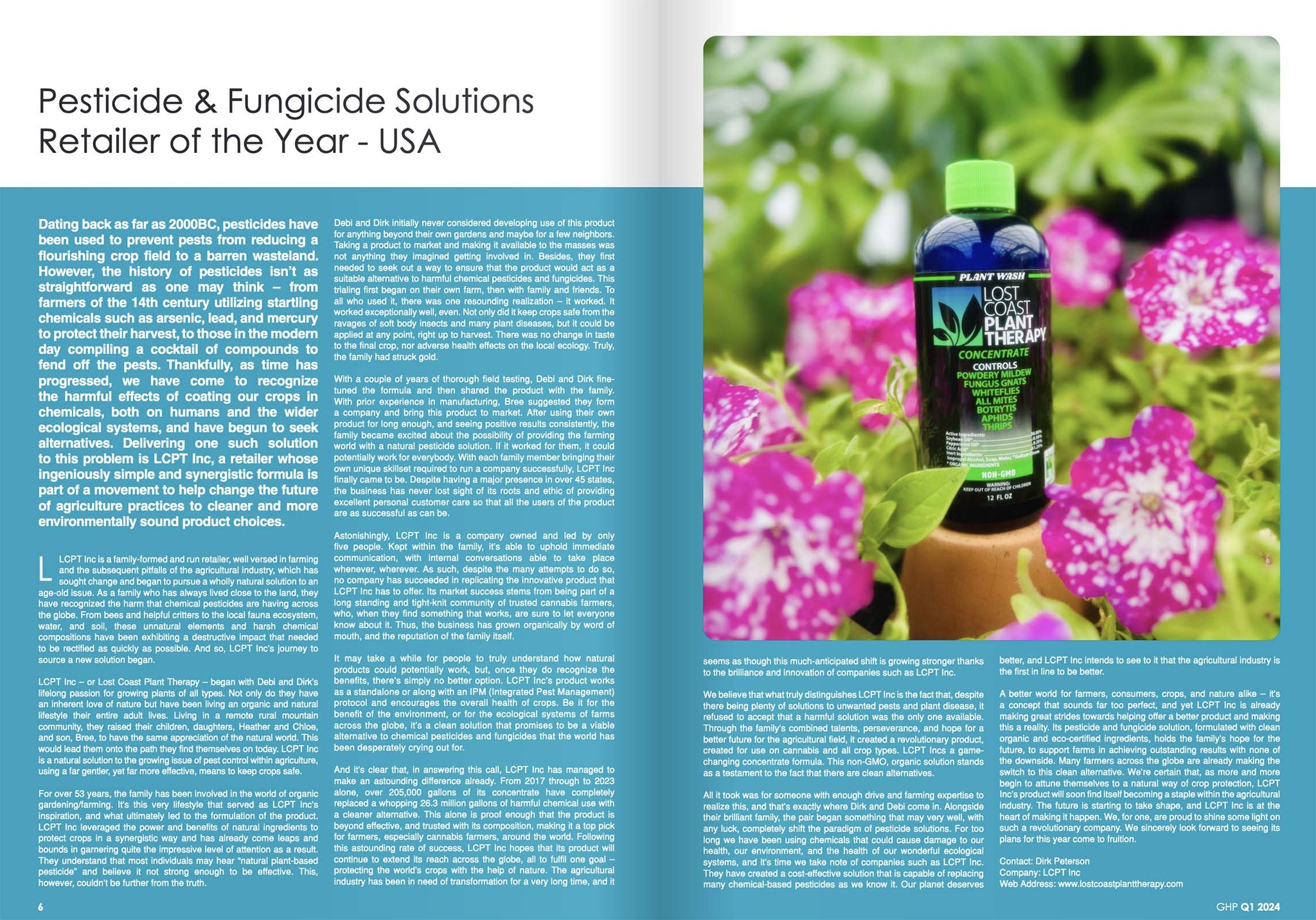
We were recently featured in the latest edition of Global Health & Pharma Magazine and recognized as the Best Pesticide & Fungicide Solution of the Year.

Harvesting Your Organic Produce
When and How to Harvest for Peak Freshness
Harvesting your organic produce at the right time is crucial for enjoying the best flavor and nutritional value. Most vegetables and fruits have a peak harvest time, which can usually be determined by size, color, and firmness. For instance, tomatoes are best harvested when they're fully colored and slightly soft to the touch, while leafy greens like lettuce are most tender and flavorful when picked in the morning.
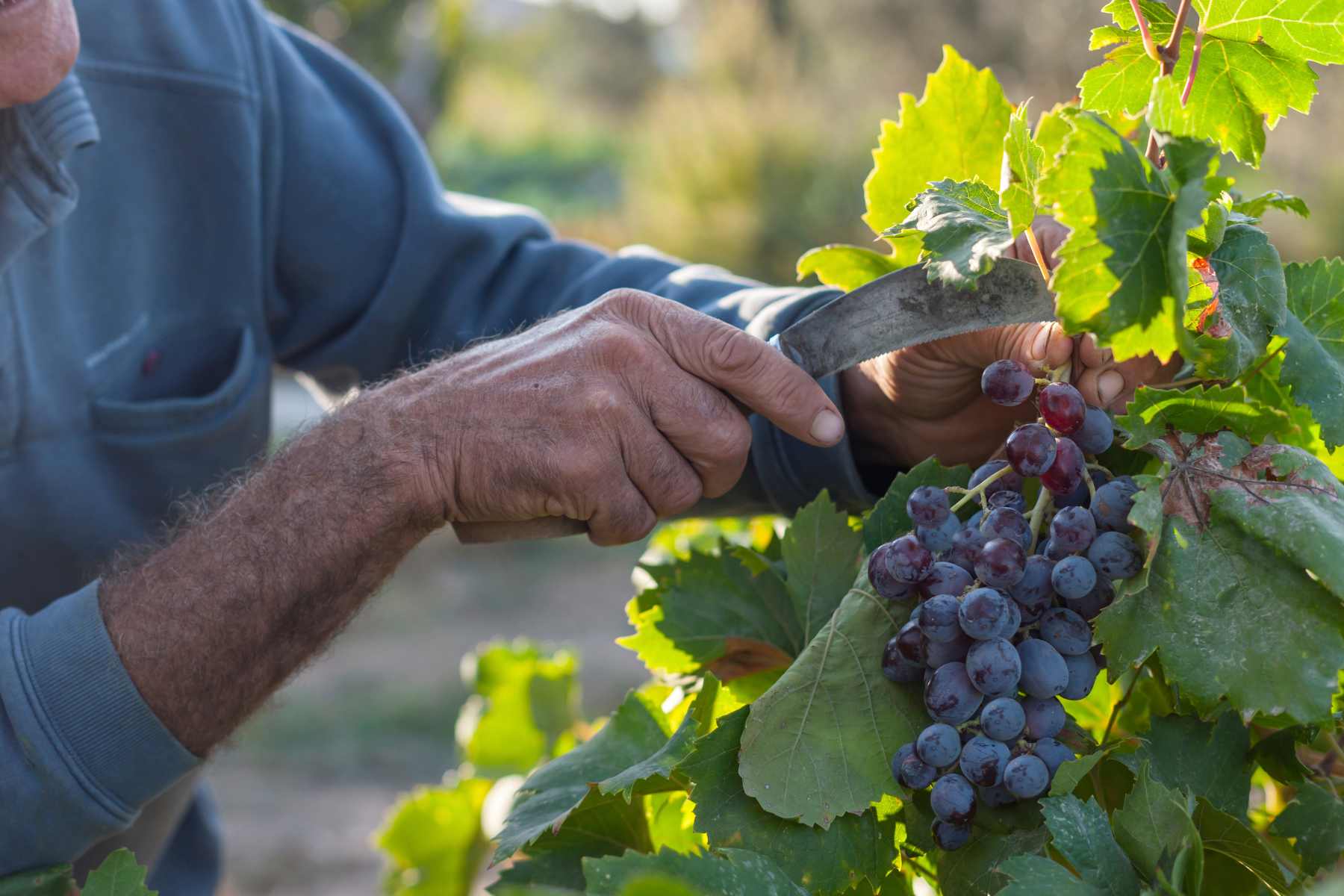
Gentle handling is key to preventing bruising and damage. Use a sharp knife or scissors to cut fruits and vegetables from the plant, and avoid pulling or twisting, which can harm the plant and reduce future yields.

Going Beyond the Basics
Raised Beds, Greenhouses, and Other Gardening Enhancements
Raised beds offer numerous benefits, including improved soil conditions, better drainage, and easier weed and pest management. By elevating the soil level, you can more easily control the soil's composition and structure, tailoring it to the specific needs of your plants. Raised beds also make gardening a little easier, reducing the need for bending and kneeling, and they can help prevent soil compaction since you won't need to walk on the growing area.
Greenhouses allow you to take your organic gardening to new heights—literally. With a greenhouse, you can start seeds earlier in the season, protect delicate plants from harsh weather, and even grow warm-weather crops year-round. Whether you opt for a large, stand-alone structure or a smaller, lean-to style, a greenhouse can be a game-changer for extending your gardening possibilities.
Other enhancements, like cold frames and hoop houses, offer simpler, more affordable ways to protect your plants from cold snaps and extend your growing season.

Our Commitment to Organic Gardening and Earth-Friendly Practices
Lost Coast Plant Therapy was born from a deep commitment to organic gardening and is designed to support your organic gardening efforts by providing a safe, effective way to prevent and control pests and diseases when used as directed. Made with natural and organic ingredients, our product embodies our dedication to sustainability and the well-being of the environment.
By choosing products that support organic gardening, like our Natural Plant Protector, you're making an environmentally conscious choice. Our product is biodegradable and breaks down naturally over time.

Conclusion
The heart of organic gardening is in the choices we make every day, in the way we tend our plants and protect our little patches of earth. As gardeners, we have the unique opportunity to influence the health of our planet positively. By choosing organic methods and products like Lost Coast Plant Therapy, we're helping gardeners nurture soil health, conserve water, and support biodiversity. Together, we can create gardens that are not only productive and beautiful but also harmonious with the natural world.
Whether you're a novice gardener getting your hands dirty for the first time or a seasoned grower always looking to learn, remember that every choice you make, from the potting soil you use to the Natural Plant Wash you might need for pest prevention and control, shapes the health of your garden and, by extension, the planet.
Let's commit to practices that celebrate each sprout, each bloom, and each harvest as a step towards a healthier, more sustainable future.
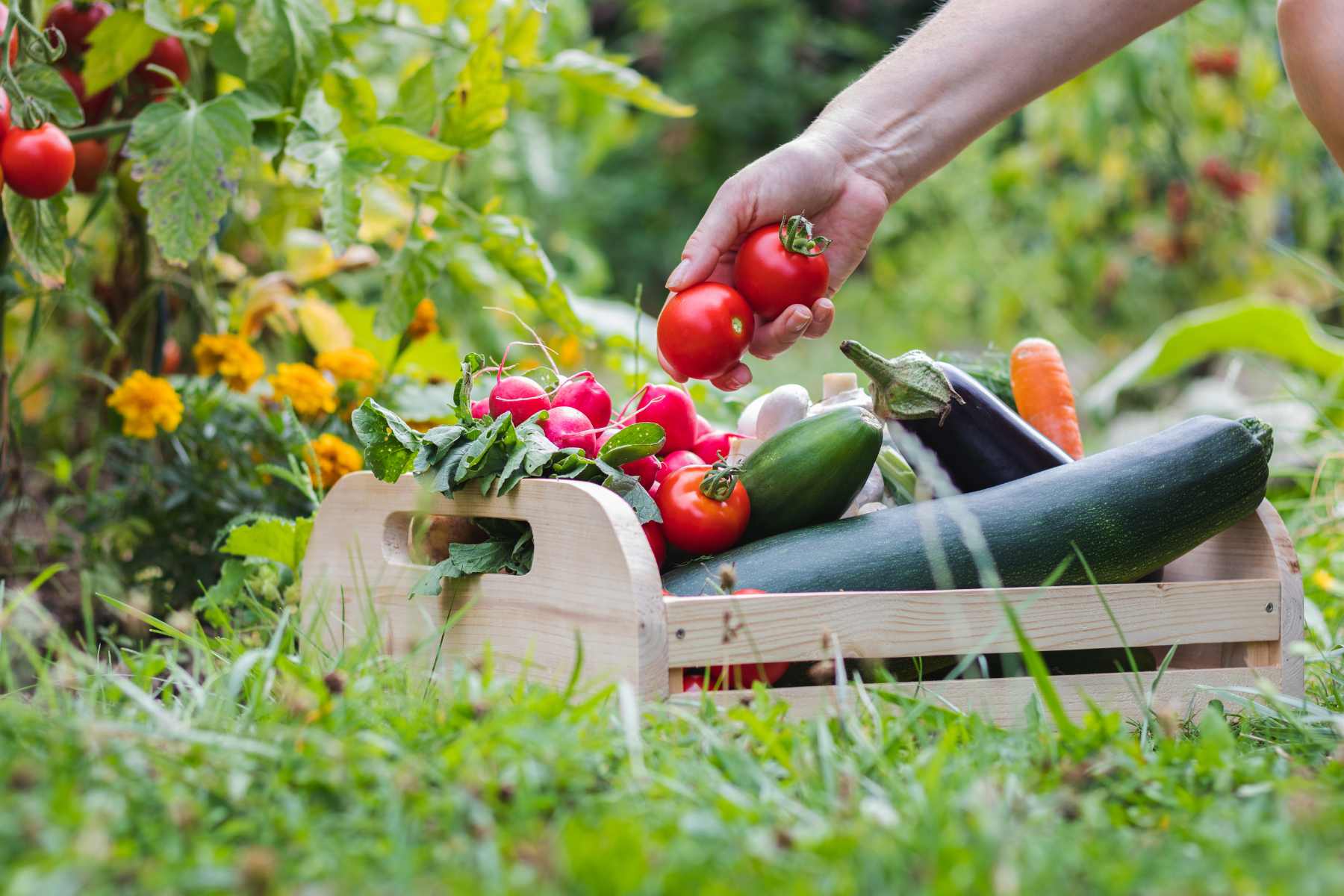
FAQ's
What does it mean to start an organic vegetable garden?
Starting an organic vegetable garden means growing your vegetables without synthetic fertilizers or harsh pesticides, focusing instead on natural and organic methods and products to enhance soil fertility and manage pests.
How can I add nutrients to the soil organically?
You can add nutrients to the soil by using compost, well-rotted manure, green manures (cover crops), and organic fertilizers derived from natural sources such as bone meal or seaweed.
What are some common garden pests, and how can I manage them?
Common garden pests include aphids, thrips and spider mites. They can be controlled with a natural and organic minimum risk pesticide like Lost Coast Plant Therapy when used as directed.
I'm a new gardener. How do I know how to start gardening organically?
Simple! You start gardening organically by first deciding what plants you'd like to grow, considering your climate and space. Start small, with easy-to-grow plants like tomatoes or herbs, and gradually expand as you gain confidence and experience.
How do I make sure the soil is ready for planting?
Test your soil to understand its type and nutrient content. Amend it with organic matter to improve fertility and structure. Ensure it's well-draining and not compacted.
What plants need to thrive in an organic garden?
Plants need well-balanced soil rich in organic matter, adequate water, sunlight, and protection from pests and diseases. Each plant has specific requirements, so research is key.
Can I grow hybrid plants organically?
Yes, you can grow hybrid plants organically. The term "hybrid" refers to the method of breeding, not how the plant is grown. Ensure they receive organic care throughout their growth.
How can I organically manage soil fertility?
Manage soil fertility by rotating crops, adding compost, using green manures, and applying organic fertilizers based on soil test recommendations.
What soil type is the best choice organic gardening?
Loamy soil is ideal, but any soil type can support organic gardening with proper amendments like compost to adjust drainage and fertility.
How can non-organic methods affect plants and soil?
Non-organic methods, relying on synthetic fertilizers and pesticides, can degrade soil health, harm beneficial microorganisms, and lead to pesticide resistance among pests.
What does going organic in home gardens involve?
Going organic involves rejecting synthetic fertilizers and pesticides, adopting natural soil amendments, practicing sustainable gardening methods, and focusing on ecosystem health.
How can organic farmers ensure their plants have enough nitrogen?
Organic farmers can use green manures, composted manures, and plant legumes that fix atmospheric nitrogen into the soil, ensuring plants have access to this essential nutrient.
See more FAQ's here.
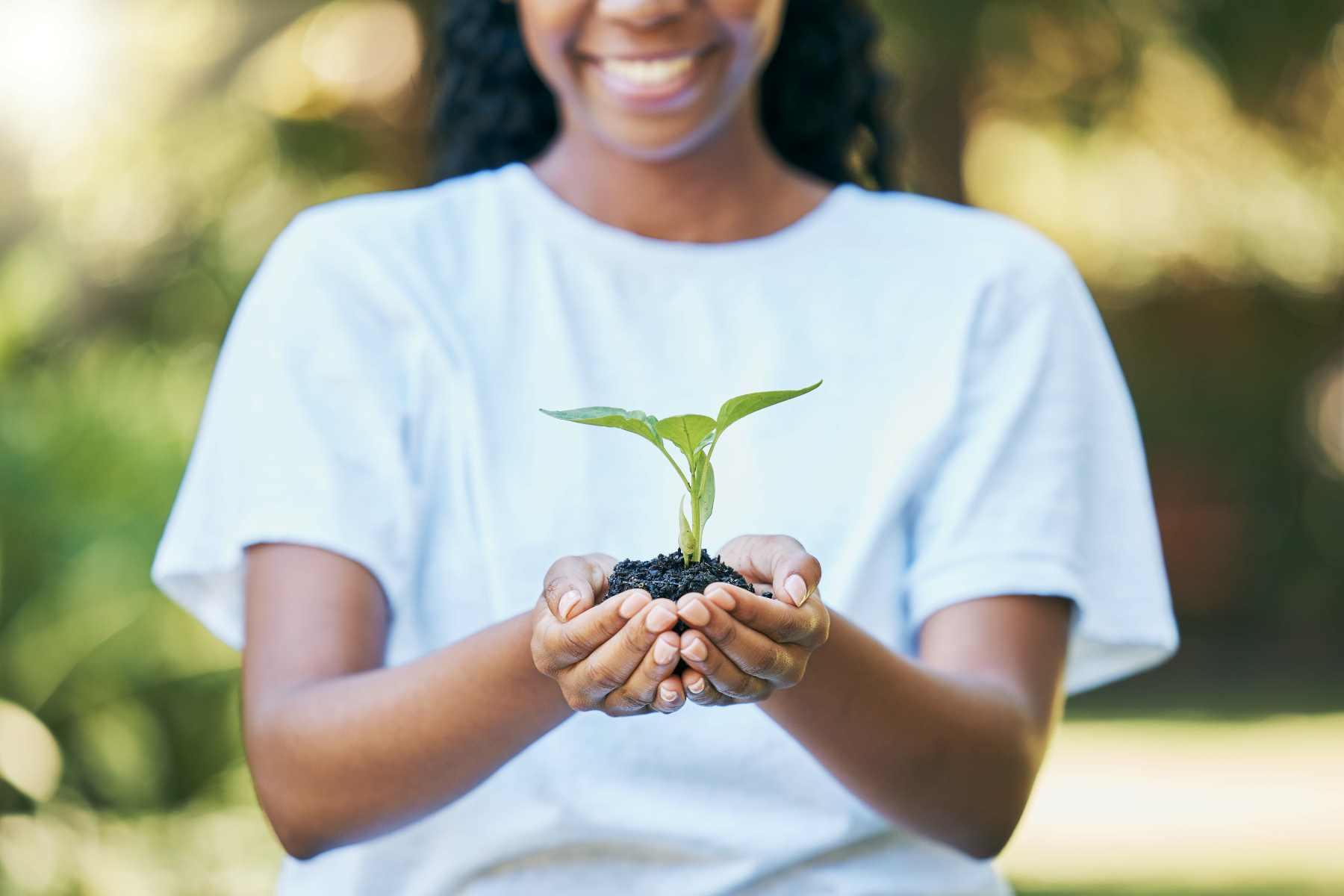
Additional Resources
Growing an Organic Garden - Penn State Extension
Starting an Organic Garden - USDA
Grow Organic - Seeds, Plants, Tools and Supplies


